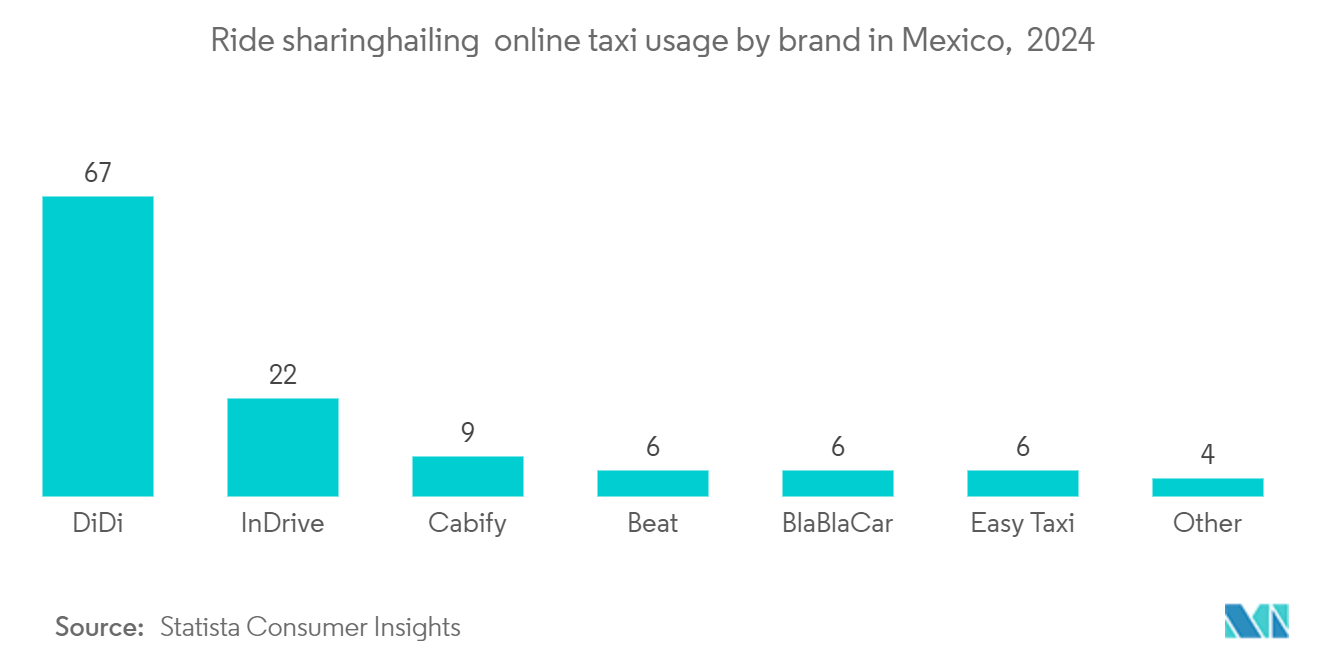Market Trends of Mexico Ride Hailing Industry
Online Booking Channel is Expected to be the Dominant Booking Mode
Reduced taxi fares and ease of booking through mobile apps are the major factors driving online taxi booking to capture a significant share in the region. With the advent of e-hailing taxi applications, such as Uber, ridesharing has been one of the game-changing innovations in the transportation sector.
In addition, the increasing adoption of smartphones embedded with GPS, linked with the availability of digital road maps through APIs, offered essential supporting facilities such as navigation and tracking for ridesharing services.
In 2023, over 71% of Mexicans (60 million) used the internet, providing access to ridesharing apps like Uber and Didi Chuxing. Over 85% of Mexicans owned smartphones, the essential tool for booking rides, navigating routes, and managing payments.
Additionally, ridesharing apps offer a convenient and often affordable alternative to traditional taxis, especially in areas with limited public transportation. Moreover, companies operating in this market offer consumer-centric mobile platforms and various vehicle options to cater to a larger customer base.
Hence, the online booking system is expected to dominate the Mexican ridesharing market during the forecast period.

The Intracity Segment is the Most Used Distance Type Segment
The intracity segment is the most used distance type segment of the Mexican ridesharing market, driven by growing urbanization, traffic congestion, and the need for convenient and affordable transportation solutions in major cities. The intracity segment accounted for over 70.7% of the Mexican ridesharing market in 2022.
Further, the dominance of the intracity segment in the Mexican ridesharing market can be attributed to the country's rapid urbanization and the challenges associated with urban mobility. According to data from the World Bank, Mexico's urban population grew from 71.3% in 2000 to 80.5% in 2021. This increasing urbanization has led to higher traffic congestion, longer commute times, and an increasing demand for convenient and cost-effective transportation options within cities.
In addition, the COVID-19 pandemic contributed to the growth of the intracity ridesharing segment in Mexico. As people sought to avoid public transportation due to health concerns, ridesharing services became a popular alternative for shorter trips within cities.
While the intracity segment dominates the Mexican ridesharing market, other distance types, such as intercity and airport transfers, are also gaining traction. However, the intracity segment remains the most significant due to the convenience, affordability, and increasing demand for urban mobility solutions in Mexico's rapidly urbanizing cities.


